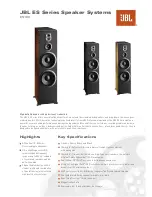
FR
EN
14
4T/ AMORÇAGE H.F.
1. Appuyer sur la gâchette. Le gaz de protection
s’écoule.
2. Relâcher la gâchette. L’arc s’établit et le courant de
soudage atteindra son niveau pendant le temps de
montée en intensité.
3. Appuyer sur la gâchette. Le soudage continue.
4. Relâcher la gâchette, le courant de soudage
commence à descendre et l’arc s’éteint une fois le
temps de l’évanouissement écoulé. Le gaz de protection
continue à s’écouler pendant la durée sélectionnée.
4-STROKE / HF STRIKING
.
1. Press the trigger. The shielding gas flows out.
2. Release the trigger. The arc is set up and the current
rises to its welding level over the current rise time.
3. Press the trigger. The welding continues.
4. Release the trigger, the welding current starts to fall and
the arc dies when the slope-down time expires. The
shielding gas continues to flow for the selected time.
4T/ AMORÇAGE PAR CONTACT (PAC)
1. Appuyer légèrement l’électrode sur la pièce à souder.
2. Appuyer longuement sur la gâchette de la torche.
3. Ecarter lentement l’électrode de la pièce à souder.
L’arc s’établit et le courant de soudage atteindra son
niveau pendant le temps de montée en intensité.
4. Appuyer sur la gâchette. Le soudage continue.
5. Relâcher la gâchette, le courant de soudage
descend et se coupe dès que la durée de
l’évanouissement sélectionnée est écoulée. Une fois
l’arc éteint, le gaz de protection continue à s’écouler
pendant la durée du post-gaz.
4-STROKE / CONTACT STRIKING (PAC
)
1. Press the electrode lightly on the work piece
2. Press the torch trigger and hold it down for a long time.
3. Slowly move the electrode away from the work piece.
The arc is set up and the current rises to its welding level
over the current rise time.
4. Press the trigger. The welding continues.
5. Release the trigger, the welding current falls and cuts
out when the selected slope-down time expires. After the
arc has died the shielding gas continues to flow for the
post-gas time.
4T/ AMORÇAGE PAR CONTACT (PAC)
En appuyant sur la gâchette pendant l’évanouissement
le courant restera au même niveau aussi longtemps
que vous maintiendrez votre pression. Quand vous
relâcherez la gâchette, le courant descendra.
4-STROKE / CONTACT STRIKING (PAC)
Pressing the trigger during slope-down makes the current
stay at the same level as long as the trigger is held down.
After the trigger is released the current falls.
4T/ AMORÇAGE PAR CONTACT (PAC)
En appuyant longuement sur la gâchette on peut
revenir au niveau du courant de soudage.
4-STROKE / CONTACT STRIKING (PAC)
Pressing the torch trigger and holding it down for a long
time makes the current return to its welding level.
C10. FONCTION CITOSTEP ET 4T STEP
C10. CITOSTEP AND 4T STEP FUNCTION
Cette fonction vous permet de choisir 2 niveaux de
courant, le courant de soudage et un second niveau
de courant Vous pouvez ainsi varier de l’un à l’autre
en appuyant rapidement sur la gâchette de la torche.
La fonction CITOSTEP ne peut être utilisée qu’en mode 4
temps.
Cette fonction peut être utilisée pour régler l’apport de
chaleur si la pièce à souder est en surchauffe ou si
vous désirez momentanément davantage de chaleur.
Avec cette fonction vous pouvez passer à un niveau
de courant plus bas, par exemple quand vous
changez la position de soudage ou pour remettre du
métal d’apport, sans être obligé d’arrêter le soudage.
Un courant plus bas peut également être utilisé pour le
remplissage du cratère si vous ne désirez pas utiliser
l’évanouissement.
La sélection et le réglage de cette fonction s’effectuent
à l’aide du potentiomètre principal
.
Pour ajuster la fonction CITOSTEP utilisez les boutons
P4
et
P5
jusqu’à ce que les LED
L10
et
L11
soient
allumées. Le courant de soudage est sélectionné à
partir du bouton
R1
. Pendant le réglage, la valeur
réglée du courant s’affiche en ampères.
Vous pouvez varier entre le courant de soudage et le
second niveau de courant en appuyant rapidement sur
la gâchette.
En appuyant à nouveau rapidement, vous pouvez
revenir au courant de soudage. Les voyants du
panneau indiquent le niveau de courant sélectionné.
Vous pouvez arrêter le soudage en appuyant
longuement sur la gâchette de la torche (> 0.7 s).
This function enables you to choose two levels of current,
welding current and a second current level. Hence you
can vary from one to the other by stabbing the torch
trigger.
The CITOSTEP function can only be used in the 4-stroke
mode.
This function can be used to adjust the amount of heat put
in if the work pierce is overheated or if you temporarily
need more heat.
With this function you can change to a lower heat level, for
example when changing your welding position or to add
filler metal without having to stop welding.
A lower current can also be used to fill a cavity if you do
not want to use slope-down.
The adjustment of this function are done using
potentiometer selecting in the cycle the CITOSTEP, to
select it, use the button
P4
and
P5
until the Led
L10
or
L11
are on.Now you can regulate the current using the
Knob
R1
During adjustment, the adjusted current is displayed in
amps.
You can switch between the welding current and the
second level by pressing the trigger quickly.
By pressing quickly again you can return to the welding
current. The lights on the panel show the current level selected.
You can stop welding by holding the torch trigger down for
a long time (>0.7 s).
The function 4T STEP enables using an initial current
Содержание CITOTIG 240 AC/DC
Страница 138: ...138 D3 DESCRIPTION DE LA FACE AVANT ET DE LA FACE ARRIERE D3 26 28 25 27 19 18 22 23 21 24 30 31 32 ...
Страница 139: ...139 D3 PIECES DE RECHANGE D3 6 20 14 2 7 8 12 3 1 17 15 9 10 11 4 5 13 16 29 34 ...
Страница 140: ...140 D3 PIECES DE RECHANGE D3 6 5 18 4 19 3 2 20 8 11 12 1 16 9 10 17 7 13 14 15 ...
Страница 141: ...141 SCHEMA ...
Страница 142: ...142 DESCRIPTION DU PANNEAU DE REGLAGE voir page 7 210 0 15 0 3 P1 P3 P12 P7 P8 P9 P10 P11 P4 P6 P5 P2 R1 P13 P14 ...
Страница 144: ......
Страница 145: ......
Страница 146: ......
Страница 147: ......
Страница 148: ......















































